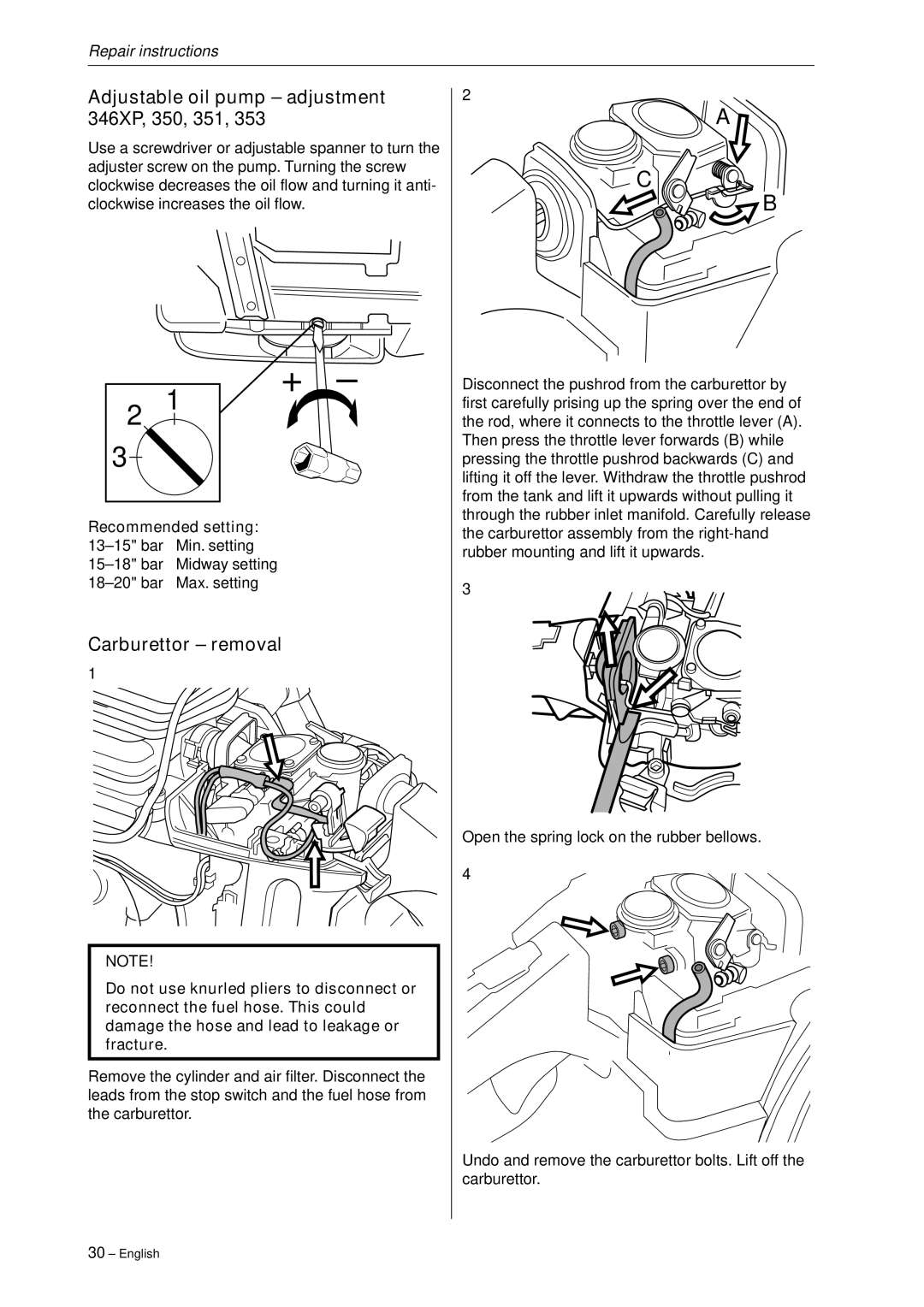340, 345, 346XP,350, 351, 353 specifications
Husqvarna is renowned for its high-quality chainsaws, and the Husqvarna 340, 345, 346XP, 350, 351, and 353 models are no exceptions. These models have garnered a reputation among both professional and amateur users for their reliability, durability, and cutting performance.The Husqvarna 340 is an entry-level model designed for homeowners and light-duty tasks. It features a 40cc engine that provides a good balance of power and weight, making it easy to handle during extended use. The 340 is equipped with low-vibration technology, significantly reducing operator fatigue and making it suitable for less experienced users.
The Husqvarna 345 is slightly more powerful than the 340, boasting a 45.7cc engine. This model is ideal for users who require a bit more power for medium-duty tasks. It incorporates the air injection system, which helps to separate larger debris before it reaches the air filter, prolonging the life of the filter and maintaining optimal performance.
Moving up the range, the Husqvarna 346XP is a powerful professional chainsaw tailored for demanding tasks. With a 50.2cc engine and the X-Torq engine technology, it provides high cutting performance while reducing fuel consumption and emissions. The 346XP features an adjustable oil pump that allows for precise lubrication, making it an excellent choice for commercial users.
The Husqvarna 350 shares similarities with the 346XP but is designed for users who need a well-rounded saw for various applications. Its 50.2cc engine delivers ample power, and the ergonomically designed handle provides comfort during prolonged use. The chainsaw's advanced starting system ensures easy ignition, even in challenging conditions.
The 351 is another versatile option, equipped with a 50cc engine, designed for both professional and home use. It emphasizes user comfort and ease of handling. The compact design combined with features such as an efficient air filtration system makes the 351 suitable for long hours of work.
Lastly, the Husqvarna 353 is a heavy-duty model that excels in performance and longevity. It has a 50cc engine and incorporates various safety features, including a chain brake and throttle lock, to ensure safe operation. The saw also utilizes the unique anti-vibration system, minimizing vibrations that can lead to user fatigue.
In summary, the Husqvarna 340, 345, 346XP, 350, 351, and 353 models each offer distinct features catering to a wide range of users. From homeowners tackling light tasks to professionals requiring rugged performance, these chainsaws showcase Husqvarna's commitment to quality, innovation, and user-centric design.

